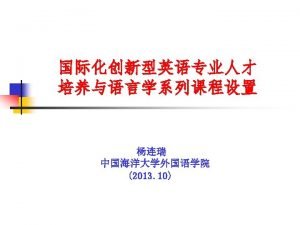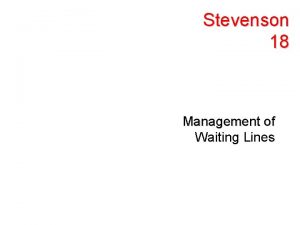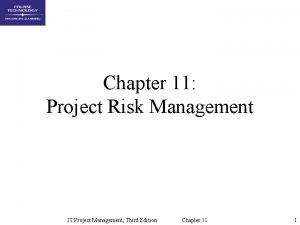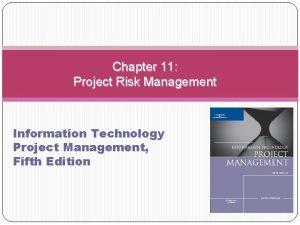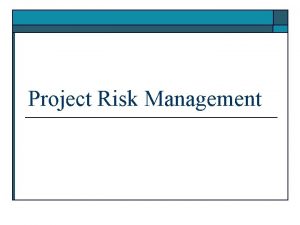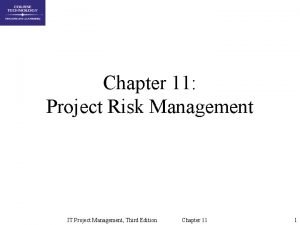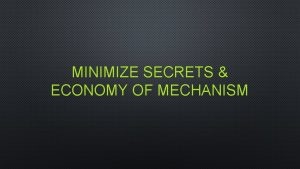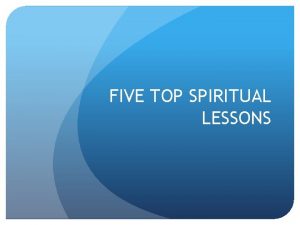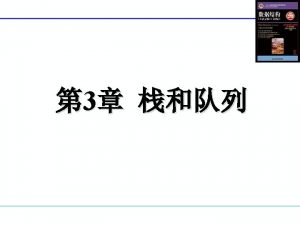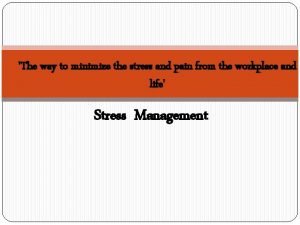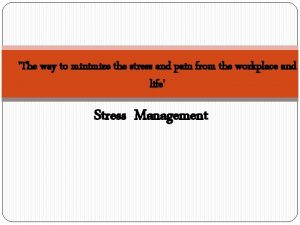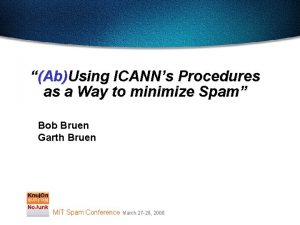TOP FIVE WAY TO MINIMIZE RISK WHEN DISCIPLING

























- Slides: 25

TOP FIVE WAY TO MINIMIZE RISK WHEN DISCIPLING AND TERMINATING EMPLOYEES Elizabeth Coonan Jan. 24, 2018


S OF EMPLOYMENT LAWS Law Covers ADA Disability OSHA Workplace safety ADEA Age (40+) IRCA National origin/citizenship EPA Equal pay (♀=♂) NLRA Workers’ mutual aid & protection FLSA OT, minimum wage PDA Pregnancy FMLA Medical leave Title VII Race, color, religion, sex or national origin GINA Genetic info USERRA Military service ICRA (Iowa) Age, race, creed, color, sexual orientation, gender identity, national origin, religion, disability WDPP Wrongful discharge in violation of public policy

TOP 5 THINGS YOU NEED TO KNOW: 1) Quality communication with your employees 2) Follow your policies 3) Conduct fair and thorough investigations 4) Maintain good documentation 5) Don’t retaliate!

#1 QUALITY COMMUNICATION Employer Expectations Employee Conduct Reward, Discipline or Discharge

RULES OF THUMB • Would I feel comfortable saying this in front of my mother? • Would I feel comfortable saying this in front of the CEO? • Would I feel comfortable being quoted saying this in front of a jury? • If the answer to any of these is NO, don’t say it at work.

#2 POLICIES • How do we convey our expectations? – Verbally • Performance reviews • Counseling – Written • Handbooks • Policies

DISCIPLINE Performance vs. Conduct

PERFORMANCE AND CONDUCT Performance: The comparison of an employee’s actions against the objective or subjective standards of the employee’s position Conduct: The comparison of an employee’s behavior against the employer’s written or unwritten behavioral standards or work rules

PROGRESSIVE DISCIPLINE • Employer should take action specifically designed to improve employee’s performance or conduct • The penalty imposed should fit the violation

#3 INVESTIGATIONS Best Practices • Thorough • Independent/neutral • Organized • Defined scope • Documentation

INVESTIGATIONS When do we hire an outside investigator? • History between party and HR Manager that impairs neutrality • Complaint involves HR Manager • Complaint involves C-Suite Executive • Timing/size of investigation

#4 GOOD DOCUMENTATION Maintaining fair and accurate documentation can serve as positive evidence in a lawsuit for: • Retaliation • Wrongful termination • Discrimination

DOCUMENTATION GOALS • Goal: Communication tool and to make a record of the communication. • Maintaining fair and accurate documentation can serve as positive evidence in a lawsuit – Establishes your credibility – Shows you treat EEs consistently

DISCIPLINARY DOCUMENTATION 1. 2. 3. 4. 5. Note the policy or rule violated Note the conduct constituting the violation Note prior discussions/discipline for similar conduct Factual statements, not conclusions/judgments Don’t speak in absolutes (always, never, etc. )

DISCIPLINARY DOCUMENTATION 6. Be objective 7. Describe the conduct, not the individual (e. g. , “bad attitude”) 8. Describe impact on others 9. Be specific — give examples 10. Do it contemporaneously! a. (Don’t backdate)

DOCUMENTATION • BAD: Earlier this month, Betty wasted, and I suspect she has a drug problem and needs rehabilitation. • GOOD: On June 12, 2015 at approximately 1: 15 p. m. I observed Betty Smith walking in an unsteady manner to her office. When I walked into Betty’s office I could see she stumbled to get to her chair. When I asked Betty if she was ok, she stared at me and slowly slurred “hmm, that’s a great question. ” I could smell alcohol on her breath and could see her eyes were bloodshot. I immediately told Betty I was suspicious she was under the influence of alcohol or drugs. I proceeded to instruct her to gather belongings and pursuant to our policy she would be required to get a test to determine if she was under the influence while at work.

#5 DON’T RETALIATE

RETALIATION: DO YOU KNOW WHAT TO DO? • Employee makes an internal complaint about safety • Employee makes a complaint with an agency (IOSH, DOL, EEOC, ICRC) • Employee’s complaint turns out to be inaccurate: – There is a difference between fraudulent complaint and unfounded complaint – Before any counseling/discipline is considered for disruption and problems caused by accusations – assess whethere was good faith

HARASSMENT AND DISCRIMINATION: HOW SHOULD YOU RESPOND? • Employee says pay raise/discipline was unfair • Employee says co-worker was rude to him or her • Manager sees inappropriate behavior • Employee mentions religion as a reason for not being able to work a shift

PAY ISSUES: DO YOU KNOW WHAT TO DO? • What can I do with an employee’s last paycheck? • Uniforms • Complaints about mistakes in pay • Complaints about unfairness

FLSA: DO YOU KNOW WHAT TO DO? • What can I do about “unauthorized overtime” – not pay, discipline, etc. ? • The employees want to use “comp time” instead of vacation/PTO. Can I do that? • An employee is salaried/exempt but has been continuing to have poor performance and we keep removing job duties. Is that a problem?

FLSA: DO YOU KNOW WHAT TO DO? • Everyone in our industry has a production bonus for hourly employees. Is that a good idea? • Some hourly employees are answering emails after work hours. That’s ok because it’s de minimis (not very much time), right?

QUESTIONS?

Website: www. brownwinick. com Toll Free Phone Number: 1 -888 -282 -3515 OFFICE LOCATIONS: 666 Grand Avenue, Suite 2000 Des Moines, Iowa 50309 -2510 Telephone: (515) 242 -2400 Facsimile: (515) 283 -0231 616 Franklin Place Pella, Iowa 50219 Telephone: (641) 628 -4513 Facsimile: (641) 628 -8494 DISCLAIMER: No oral or written statement made by Brown. Winick attorneys should be interpreted by the recipient as suggesting a need to obtain legal counsel from Brown. Winick or any other firm, nor as suggesting a need to take legal action. Do not attempt to solve individual problems upon the basis of general information provided by any Brown. Winick attorney, as slight changes in fact situations may cause a material change in legal result.
 Discipling new believers
Discipling new believers Discipling a whole nation
Discipling a whole nation Liquidity measures
Liquidity measures Most inventory models attempt to minimize
Most inventory models attempt to minimize Kmap to pos
Kmap to pos Minimize perceptual mismatches
Minimize perceptual mismatches Reference of globalization
Reference of globalization How to minimize a window
How to minimize a window Minimize dfa
Minimize dfa Minimize dfa
Minimize dfa Waiting line management system
Waiting line management system Five arms covered with spiny skin on top
Five arms covered with spiny skin on top Top ten risk item tracking
Top ten risk item tracking Risk ranking in project management
Risk ranking in project management Top ten risk item tracking
Top ten risk item tracking Expected monetary value
Expected monetary value Top ten risk item tracking
Top ten risk item tracking Top ten risk item tracking
Top ten risk item tracking Top ten risk item tracking
Top ten risk item tracking Top ten risk item tracking
Top ten risk item tracking Figure 11-4
Figure 11-4 What's a frequency table
What's a frequency table Perbedaan one way dan two way anova
Perbedaan one way dan two way anova Advantage and disadvantage of threaded binary tree
Advantage and disadvantage of threaded binary tree Beda one way anova dan two way anova
Beda one way anova dan two way anova One way anova null hypothesis
One way anova null hypothesis





